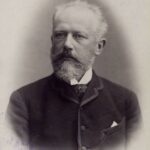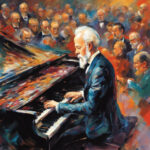ConcertStream.tv continues to give incredible access to your SSO. Not only do you get to see fantastic content whenever you want, you get an up close and personal experience all from the comfort of wherever you are!
Streaming has changed the SSO forever. We love sharing our performances with viewers around the world. We are bringing our music-making to the hearts and homes of our patrons. Whether you’re live streaming the performance or watching it a second time on demand, we’ve curated an online season that highlights the best we have to offer this season.
ConcertStream.tv
Saturday, September 14, 2024
Enigma
Maestra Tania Miller returns to open our 94th season by leading the SSO in Elgar’s Enigma Variations. Pianist Sara Davis Buechner makes her long-awaited SSO debut with Tchaikovsky’s Piano Concert No. 1.
Saturday, October 26, 2024
Controlled Burn
Cellist/composer Cris Derksen joins the SSO to perform her fiery new work Controlled Burn. Maestra Janna Sailor returns home to lead the orchestra in a new work by Saskatoon’s own Artist/Activist/Educator Zoey Roy.
Friday, December 13, 2024
Handel’s Messiah
Conductor Karl Hirzer leads the SSO Chorus, spectacular soloists, and your orchestra in Handel’s timeless work The Messiah. A beloved holiday tradition in Saskatoon since it was first performed here in 1913.
Saturday, January 18, 2025
The Medium
What does the future hold for you? An intimate staging of Menotti’s haunting opera The Medium. It’s a spooky two-act dramatic opera where phony psychic Madame Flora uses her clients’ grief to deceive them with the help of her daughter and a mute servant. But one night, an uncanny encounter leads to murder and madness.
Saturday, February 15, 2025
Sleeping Beauty
Violinist Timothy Chooi returns for a concert filled with music that’s perfect for you and your valentine. Led by Maestra Judith Yan, Chooi and your orchestra will wow us with Bruch’s stunning Scottish Fantasy. The romantic evening is made complete with selections from Tchaikovsky’s ballet The Sleeping Beauty curated by ballet aficionado Yan herself.
Sunday, March 2, 2025
Dixit – Baroque Resonance
Maestra Cosette Justo Valdés returns to once again show us what magic she can create with your orchestra and the SSO chorus. Together they will highlight some of the greatest baroque works including Handel’s stunning Dixit Dominus.
Saturday, March 8, 2025
The Lost Birds
We’re celebrating 40 seasons with our very own concertmaster Michael Swan! He’ll take centre stage to perform Wieniawski’s Violin Concerto No.1. Conductor Evan Mitchell leads your SSO, and choir, in Christopher Tin’s moving choral work The Lost Birds. Sweeping and elegiac, it’s a haunting tribute to those soaring flocks that once filled our skies, but whose songs have since been silenced.
Saturday, March 29, 2025
Pictures at an Exhibition
Conductor Karl Hirzer returns to lead your SSO in Mussorgsky’s iconic Pictures at an Exhibition. Pianist Meagan Milatz makes her way back home to the prairies to help us celebrate composer David L. McIntyre’s 75th birthday with a performance of his Concerto for Piano and Orchestra.
Saturday, April 12, 2025
Symphonic Sci-Fi
Our favourite sci-fi shows and movies would be very different without their iconic soundtracks. We’re highlighting our favourite works from galaxies near and far! With a special guest host to lead the way, it’s going to be out of this world.
Saturday, May 3, 2025
Chopin and the New World
After his triumphant orchestral debut with us in 2021, pianist Jerry Hu returns home to perform Chopin’s Piano Concerto no.1. Led by Maestra Tania Miller, your SSO will finish our mainstage series with Dvořák’s New World Symphony and Goulet’s Citius, Altius, Fortius.
Saturday, May 31, 2025
Metamorphosis
We end our season with an incredible immersive experience created by visual artist Monique Martin. She will fill St. John’s with thousands of silkscreened paper butterflies, while Maestra Judith Yan and your orchestra fill the space with incredible music.
Watch our social media for future announcements! There are more great options to come on ConcertStream.tv.








